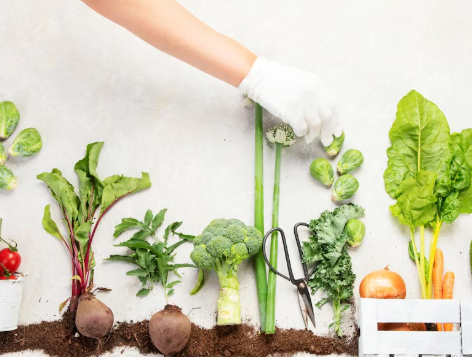Are you ready to transform your backyard into a flourishing paradise while doing your part for the environment? If you've been searching for ways to embrace sustainable practices right at home, you're in the right place! Welcome to our Ultimate Guide to Organic Gardening, where we'll equip you with essential tips to cultivate your green thumb and promote organic gardening in your community.
What is Organic Gardening?
Before we dig into the juicy details, let's clarify what organic gardening is all about. Essentially, it’s a method of gardening that avoids synthetic fertilizers, pesticides, and genetically modified organisms (GMOs). Instead, organic gardeners rely on natural processes and materials to nurture plants and maintain a balanced ecosystem. Not only does this support biodiversity, but it also produces delicious, nutrient-rich fruits and vegetables!
1. Choose the Right Location
Finding the perfect spot for your organic garden is crucial. Most plants thrive in areas that receive at least 6-8 hours of sunlight daily. Observe your garden space and make a note of the sunniest spots, as well as any shaded areas. This will help you decide what types of plants to grow where.
2. Start with Quality Soil
“Healthy plants begin with healthy soil!” This old adage holds true for organic gardening. The foundation of your garden’s success lies in nutrient-rich soil. Consider getting a soil test to check its pH and nutrient levels. Amend the soil with organic compost, well-rotted manure, or natural fertilizers to create a thriving environment for your plants.
3. Select Suitable Plants
As a beginner, it's best to choose plants that are known for being easy to grow in your climate and resistant to pests. Some ideal options include tomatoes, lettuce, radishes, and herbs like basil and parsley. These plants will help you build confidence as you navigate your gardening journey.
4. Embrace Companion Planting
Did you know that certain plants can help each other grow? This fantastic technique, known as companion planting, allows you to maximize space and deter pests naturally. For example, planting marigolds alongside your vegetables can repel harmful insects, while beans can improve nitrogen levels in the soil for neighboring plants.
5. Practice Crop Rotation
One of the most effective organic gardening tips for sustainability is crop rotation. This practice involves changing the location of your plants each season to prevent soil depletion and reduce pest and disease problems. For example, if you grow tomatoes in one area this year, move them to a different spot the following year. This keeps your soil healthy and ensures a bountiful harvest!
6. Water Wisely
Watering is essential for healthy plants, but overwatering can lead to root rot and disease. Use a soaker hose or drip irrigation to maximize water efficiency and minimize waste. Additionally, try to water your plants in the early morning or late evening to avoid evaporation.
7. Create a Biodiversity Hub
Encouraging biodiversity is another hallmark of organic gardening for sustainability. By planting a variety of species, from flowers to vegetables, you create a balanced ecosystem that attracts pollinators and beneficial insects. You can also set up a small water feature, birdhouses, or a compost bin to further enhance your garden's biodiversity.
Conclusion: Your Green Thumb Awaits!
Congratulations! You now have the essential tools and knowledge at your fingertips to start your organic gardening journey. Remember, success in organic gardening takes patience and practice, but with these tips, you'll cultivate a vibrant, productive garden that benefits both you and the planet.
So, roll up those sleeves, get ready to dig your hands into the earth, and let the great adventure of organic gardening begin! Share your journey with us in the comments below, and don't forget to check back for more sustainable living tips! 🌱




Post a Comment